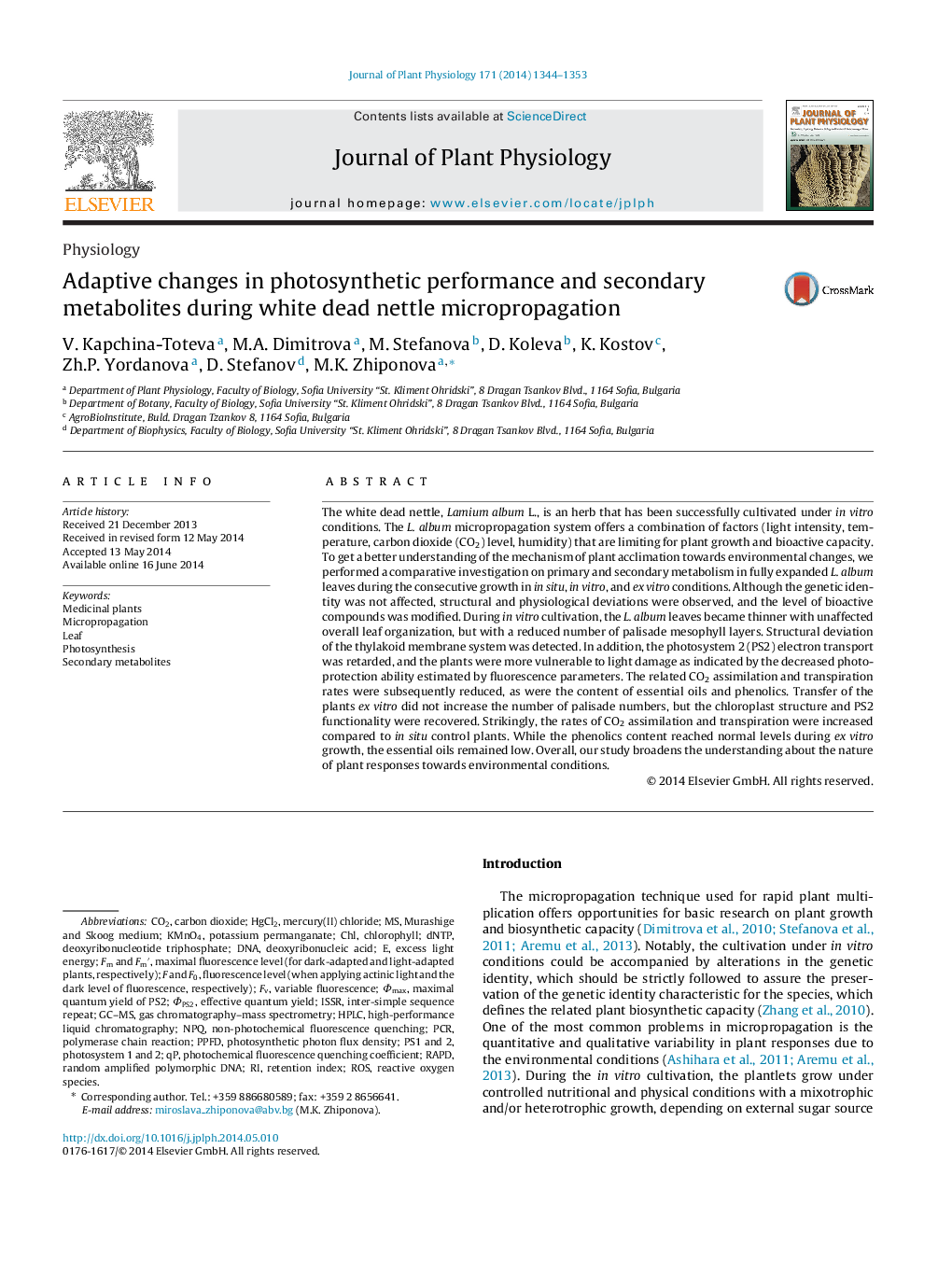| کد مقاله | کد نشریه | سال انتشار | مقاله انگلیسی | نسخه تمام متن |
|---|---|---|---|---|
| 2055920 | 1075789 | 2014 | 10 صفحه PDF | دانلود رایگان |
The white dead nettle, Lamium album L., is an herb that has been successfully cultivated under in vitro conditions. The L. album micropropagation system offers a combination of factors (light intensity, temperature, carbon dioxide (CO2) level, humidity) that are limiting for plant growth and bioactive capacity. To get a better understanding of the mechanism of plant acclimation towards environmental changes, we performed a comparative investigation on primary and secondary metabolism in fully expanded L. album leaves during the consecutive growth in in situ, in vitro, and ex vitro conditions. Although the genetic identity was not affected, structural and physiological deviations were observed, and the level of bioactive compounds was modified. During in vitro cultivation, the L. album leaves became thinner with unaffected overall leaf organization, but with a reduced number of palisade mesophyll layers. Structural deviation of the thylakoid membrane system was detected. In addition, the photosystem 2 (PS2) electron transport was retarded, and the plants were more vulnerable to light damage as indicated by the decreased photoprotection ability estimated by fluorescence parameters. The related CO2 assimilation and transpiration rates were subsequently reduced, as were the content of essential oils and phenolics. Transfer of the plants ex vitro did not increase the number of palisade numbers, but the chloroplast structure and PS2 functionality were recovered. Strikingly, the rates of CO2 assimilation and transpiration were increased compared to in situ control plants. While the phenolics content reached normal levels during ex vitro growth, the essential oils remained low. Overall, our study broadens the understanding about the nature of plant responses towards environmental conditions.
Figure optionsDownload as PowerPoint slide
Journal: Journal of Plant Physiology - Volume 171, Issue 15, 15 September 2014, Pages 1344–1353
